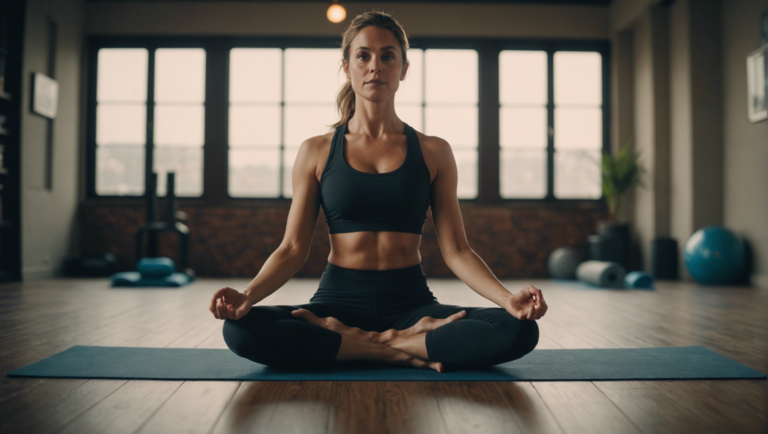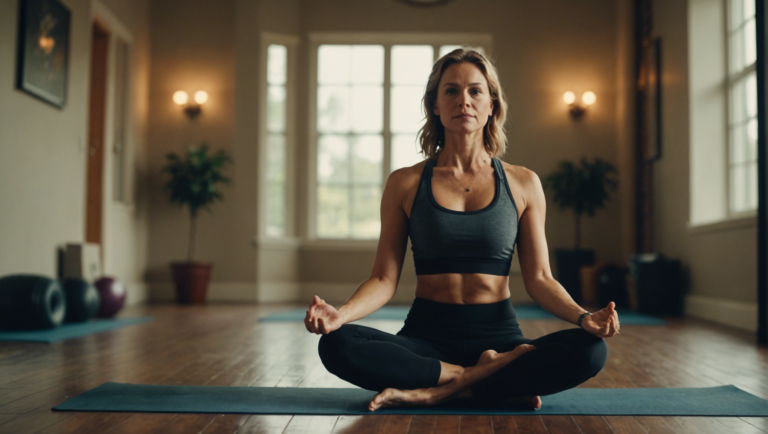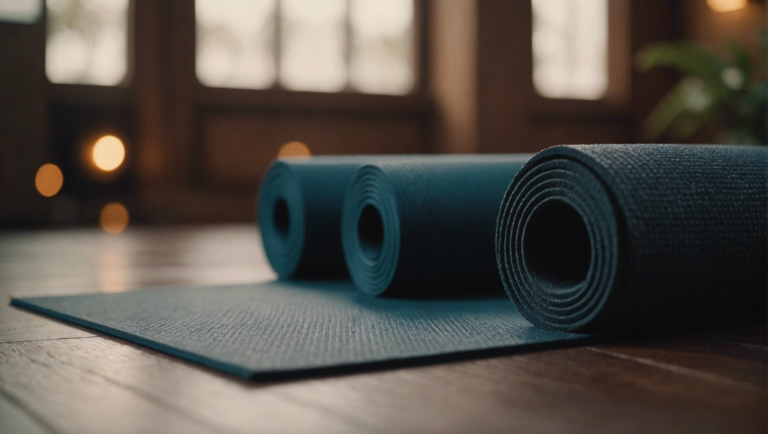Guidelines On Making Your Yoga Mat Sticky
Importance of a Sticky Yoga Mat for Stability and Balance
Sticky yoga mats play a crucial role in enhancing stability and balance during yoga practice. The grip offered by a sticky mat can significantly impact your ability to hold poses, transition between movements smoothly, and maintain proper alignment. Understanding the importance of a sticky yoga mat for stability and balance can help you advance in your practice and reap the full benefits of yoga.
Benefits of a Sticky Yoga Mat
A sticky yoga mat provides traction, preventing your hands and feet from slipping during poses. This increased grip allows you to focus on the alignment of your body and the engagement of your muscles without worrying about losing your balance. The stability offered by a sticky mat can help build confidence in your practice, enabling you to explore more challenging poses and deepen your yoga experience.
Enhancing Stability and Balance
Stability and balance are key components of a successful yoga practice. A sticky mat acts as a supportive foundation, giving you the confidence to move into various postures with control and precision. By offering a secure surface to practice on, a sticky mat helps improve your balance by reducing the risk of slipping or sliding, especially during dynamic sequences or inversions.
Importance of Grip in Yoga Practice
Grip is essential for maintaining proper alignment and stability in yoga poses. A sticky yoga mat enhances grip by creating friction between your body and the mat’s surface. This increased traction allows you to ground down through your hands and feet more effectively, helping you find stability in standing poses and transitions. With improved grip, you can engage muscles more efficiently, leading to better balance and alignment.
Choosing the Right Sticky Yoga Mat
When selecting a sticky yoga mat, consider factors such as thickness, material, texture, and durability. Opt for a mat that offers a balance between stickiness and comfort, as overly sticky mats can sometimes be challenging to move on. Look for mats with a textured surface that provides good grip without being too abrasive on your skin. Additionally, choose a mat that is easy to clean and maintain to ensure longevity.
Maintaining Your Sticky Mat
To keep your sticky yoga mat in top condition, it’s essential to establish a regular cleaning routine. Use a mild detergent or a yoga mat cleaner to wipe down your mat after each practice session. Allow it to air dry completely before rolling it up for storage. Regular cleaning not only preserves the stickiness of the mat but also prevents the buildup of sweat, dirt, and bacteria.
A sticky yoga mat is a valuable tool for enhancing stability and balance in your yoga practice. By providing traction and grip, a sticky mat supports your alignment, muscle engagement, and overall performance on the mat. Investing in a high-quality sticky yoga mat and maintaining it properly can elevate your practice and help you achieve greater stability, balance, and mindfulness in your yoga journey.
Factors Affecting the Stickiness of Your Yoga Mat
Yoga is a practice that not only benefits the body but also the mind and spirit. One essential tool for a successful yoga session is a sticky yoga mat. The stickiness of your yoga mat is crucial for maintaining proper alignment, stability, and safety during your practice. However, various factors can affect the stickiness of your yoga mat. Understanding these factors is essential for ensuring a positive and effective yoga experience.
Importance of a Sticky Yoga Mat
A sticky yoga mat provides the necessary traction to keep you from slipping and sliding during your poses. It helps you maintain stability and balance, allowing you to focus on your breath and movement rather than worrying about your hands or feet slipping out from under you. A sticky mat also offers cushioning and support for your joints, making your practice more comfortable and safe.
Material of the Yoga Mat
The material of your yoga mat plays a significant role in its stickiness. Most yoga mats are made of PVC, rubber, TPE, or a combination of materials. Each material has its unique texture and grip level. PVC mats tend to be sticky right out of the box, while rubber mats offer natural traction. TPE mats are eco-friendly and provide a good grip. Consider the material of your mat when evaluating its stickiness.
Age and Wear of the Mat
As you use your yoga mat over time, it may lose its stickiness due to wear and tear. Sweat, dirt, and oil from your skin can build up on the mat’s surface, creating a slippery film that impairs its traction. Regularly cleaning your yoga mat with a gentle cleanser can help maintain its stickiness. Additionally, the more you use your mat, the more worn out it may become, reducing its grip. It’s essential to replace your yoga mat when you notice a significant decline in its stickiness.
Environmental Factors
Environmental factors such as humidity and temperature can impact the stickiness of your yoga mat. High humidity levels can make your mat feel slippery, while low humidity can improve its grip. Hot yoga sessions or heated studios may cause you to sweat more, leading to a decrease in your mat’s stickiness. Be mindful of the environment in which you practice yoga and adjust accordingly to ensure optimal traction.
Personal Hygiene
Personal hygiene also plays a role in the stickiness of your yoga mat. Dirty feet or hands can transfer oils and dirt onto the mat’s surface, reducing its grip. Keeping yourself clean before practice and using a towel to wipe off excess sweat during your session can help maintain your mat’s stickiness.
The stickiness of your yoga mat is essential for a successful and safe practice. By considering factors such as the material of the mat, its age and wear, environmental conditions, and personal hygiene, you can ensure that your yoga mat provides the traction and support you need to enhance your yoga experience. Remember to take care of your mat and regularly clean it to maintain its stickiness and extend its lifespan.
Cleaning and Maintenance Tips to Preserve Your Mat’s Grip
Maintaining the Stickiness of Your Yoga Mat
In the world of yoga, having a reliable and sticky mat is essential for a safe and effective practice. Over time, however, the grip of your mat may start to diminish due to sweat, dirt, and general wear and tear. To preserve the grip and extend the lifespan of your yoga mat, regular cleaning and maintenance are crucial. Here are some guidelines on how to keep your mat sticky and in top condition.
Importance of a Sticky Yoga Mat
A sticky yoga mat is not just about convenience; it also plays a significant role in your practice. The stickiness of the mat provides traction that helps prevent slips and injuries during poses. It allows you to maintain stability in both static and dynamic postures, enhancing your overall yoga experience.
Regular Cleaning Routine
To maintain the stickiness of your yoga mat, it is essential to establish a regular cleaning routine. After each practice session, take a moment to wipe down your mat with a clean cloth or a mat-specific cleaner. This simple step helps remove sweat, oils, and dirt that can accumulate on the surface and compromise the grip of the mat over time.
Deep Cleaning
In addition to daily maintenance, deep cleaning your yoga mat on a weekly or monthly basis is highly recommended. You can either hand wash your mat with a gentle detergent or use a washing machine for convenience. Always refer to the manufacturer’s instructions regarding the appropriate cleaning method to avoid damaging the mat.
Natural Cleaning Solutions
For those who prefer natural cleaning solutions, there are several options available. A popular choice is a mixture of water and vinegar, which acts as a disinfectant and helps remove odor from the mat. Another natural alternative is using baking soda, known for its cleaning and deodorizing properties.
Drying your Yoga Mat
Properly drying your yoga mat is just as crucial as cleaning it. After washing, hang your mat to air dry in a well-ventilated area, avoiding direct sunlight. Excessive heat can degrade the material of the mat, affecting its stickiness and overall quality. Ensure that the mat is completely dry before rolling it up for storage.
Avoiding Harmful Products
When selecting cleaning products for your yoga mat, steer clear of harsh chemicals and solvents that can erode the surface and compromise the grip. Opt for mild, eco-friendly cleaners that are specifically formulated for yoga mats to maintain their stickiness and integrity.
Storage Tips
Proper storage also plays a role in preserving the stickiness of your yoga mat. Avoid leaving your mat in direct sunlight or extreme temperatures for prolonged periods, as this can affect its texture and grip. Instead, store your mat in a cool, dry place when not in use.
By following these guidelines on cleaning and maintenance, you can ensure that your yoga mat remains sticky and provides the traction you need for a safe and productive practice. Regular upkeep not only enhances the longevity of your mat but also contributes to an enjoyable and focused yoga experience. Prioritize the care of your yoga mat to enjoy its benefits for years to come.
Enhancing Grip on Your Yoga Mat through Personal Practice Techniques
Practicing yoga can be a transformative experience for both the mind and body. One crucial aspect of a successful yoga practice is having a sticky yoga mat that provides stability and grip during various poses and movements. If you find that your yoga mat is losing its stickiness over time, there are several personal practice techniques you can implement to enhance your grip and overall yoga experience.
Understanding the Importance of a Sticky Yoga Mat
A sticky yoga mat is essential for maintaining balance, stability, and proper alignment during yoga practice. It prevents slipping and sliding, allowing you to focus on your poses without the distraction of constantly readjusting your position. A good quality yoga mat with proper grip not only enhances your practice but also reduces the risk of injuries by providing a stable foundation.
Cleaning and Maintenance Tips for Your Yoga Mat
Regularly cleaning your yoga mat is key to maintaining its stickiness. A simple solution of water and mild soap can effectively remove dirt, sweat, and oils that accumulate on the surface of the mat. After cleaning, allow your mat to air dry completely before rolling it up for storage. Avoid using harsh chemicals or abrasive cleaning tools that can damage the material of the mat.
Enhancing Grip with Personal Practice Techniques
-
Use a Yoga Towel: Placing a yoga towel on top of your mat can significantly improve grip, especially during hot and sweaty yoga sessions. Choose a non-slip, absorbent towel that is designed for yoga practice to enhance traction and prevent slipping.
-
Hand and Feet Positioning: Pay attention to the positioning of your hands and feet during poses. Distribute your weight evenly and engage your fingers and toes to create a strong connection with the mat. Press firmly into the mat to activate the muscles in your hands and feet, increasing grip and stability.
-
Try a Grip Enhancer: If you have particularly sweaty palms or feet, consider using a grip enhancer such as rosin or chalk. These products can help absorb moisture and improve traction, allowing you to maintain a secure grip throughout your practice.
-
Practice Mindful Awareness: Cultivate mindfulness during your yoga practice by focusing on the sensations in your body and the connection with your mat. By being fully present in each moment, you can develop a deeper awareness of your movements and alignment, leading to improved grip and stability.
Enhancing grip on your yoga mat through personal practice techniques is a continual process that requires awareness, maintenance, and dedication. By implementing these tips and incorporating them into your regular practice, you can ensure that your yoga mat remains sticky and supportive, allowing you to fully experience the benefits of your yoga practice. Let your sticky yoga mat be the foundation upon which you build strength, balance, and inner peace in your yoga journey.
Comparing Different Yoga Mat Materials for Optimal Stickiness
Yoga practitioners often prioritize the stickiness of their yoga mats to ensure a secure and stable practice. The material of the yoga mat plays a crucial role in determining its stickiness level. Understanding the different materials used in yoga mats can help you choose the best option that suits your practice and preferences.
Benefits of Sticky Yoga Mats
Sticky yoga mats offer practitioners a firm grip and traction during various poses and movements. This stickiness helps prevent slipping and sliding, enhancing stability and confidence in your practice. A sticky mat also provides a supportive surface for balancing poses and challenging sequences, allowing for a safer and more effective yoga session.
Natural Rubber Yoga Mats
Natural rubber yoga mats are a popular choice for practitioners looking for optimal stickiness. These mats are eco-friendly, biodegradable, and offer excellent grip due to the natural rubber’s texture. The porous surface of natural rubber mats absorbs moisture, providing traction even during sweaty sessions. Additionally, natural rubber mats are durable and offer good cushioning for joint support.
PVC Yoga Mats
PVC (Polyvinyl Chloride) yoga mats are known for their durability, affordability, and sticky surface. These mats provide a good grip, especially when slightly damp, making them ideal for hot yoga or high-intensity practices. PVC mats are easy to clean and maintain, making them a convenient option for yogis looking for a no-fuss mat with reliable stickiness.
TPE Yoga Mats
Thermo Plastic Elastomer (TPE) yoga mats are lightweight, non-toxic, and offer excellent grip for various yoga styles. TPE mats are known for their cushioning and slip-resistant properties, providing stability during practice. These mats are eco-friendly and free from harmful chemicals, making them a popular choice for environmentally conscious yogis seeking a sticky yet sustainable mat option.
Choosing the Right Material for Your Practice
When selecting a yoga mat based on its stickiness, consider factors such as your preferred yoga style, intensity of practice, and sustainability preferences. Natural rubber mats are ideal for practitioners prioritizing grip and eco-conscious materials. PVC mats are suitable for those looking for affordability and durability with dependable stickiness. TPE mats offer a balance of grip, comfort, and sustainability, making them a versatile choice for various practices.
Maintaining Sticky Yoga Mats
To maintain the stickiness of your yoga mat, regularly clean it with a mild detergent and water to remove sweat, dirt, and oils. Air-dry your mat thoroughly after cleaning to prevent mold and mildew growth. Additionally, avoid exposing your mat to direct sunlight for extended periods, as this can degrade the material and affect its stickiness over time.
Choosing a yoga mat with optimal stickiness is essential for a safe and enjoyable practice. By understanding the characteristics of different mat materials and considering your specific needs, you can select a mat that offers the right balance of grip, comfort, and sustainability for your yoga journey.
Conclusion
A sticky yoga mat into your practice can significantly enhance your stability and balance, ensuring a safer and more effective yoga session. Factors such as mat material, sweat, dirt, and wear and tear can affect the stickiness of your mat over time. By regularly cleaning and maintaining your mat using natural and gentle products, you can prolong its lifespan and grip.
Moreover, personal practice techniques such as hand and feet placement adjustments, using a towel or yoga rug, and experimenting with chalk or grip-enhancing sprays can further enhance your grip on the mat. It is essential to find what works best for you through trial and error, as everyone’s preferences and needs may vary.
When it comes to selecting a yoga mat material for optimal stickiness, consider factors such as texture, thickness, eco-friendliness, and durability. Materials like natural rubber, polyurethane, and TPE are known for their grip and traction, providing stability during challenging poses.
Whether you are a seasoned yogi or just starting your yoga journey, having a sticky mat is crucial for maintaining stability, balance, and safety during your practice. By understanding the importance of a sticky yoga mat, recognizing the factors that affect its stickiness, implementing proper cleaning and maintenance techniques, enhancing grip through personal practice methods, and comparing different mat materials, you can make an informed decision to ensure your yoga mat remains sticky and reliable for all your yoga sessions. Remember, a sticky mat not only supports your practice but also contributes to a deeper connection between mind, body, and spirit, allowing you to fully immerse yourself in the transformative benefits of yoga.


